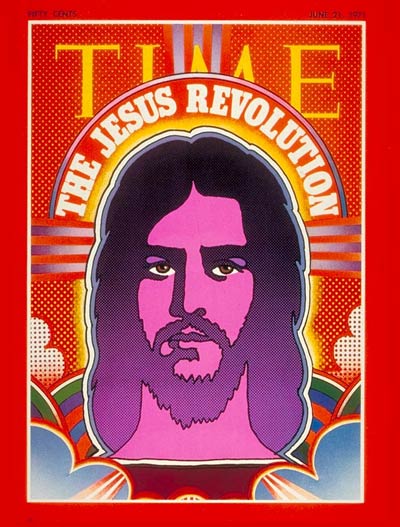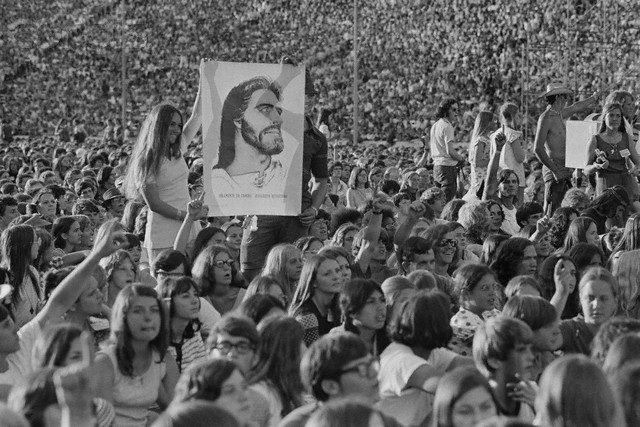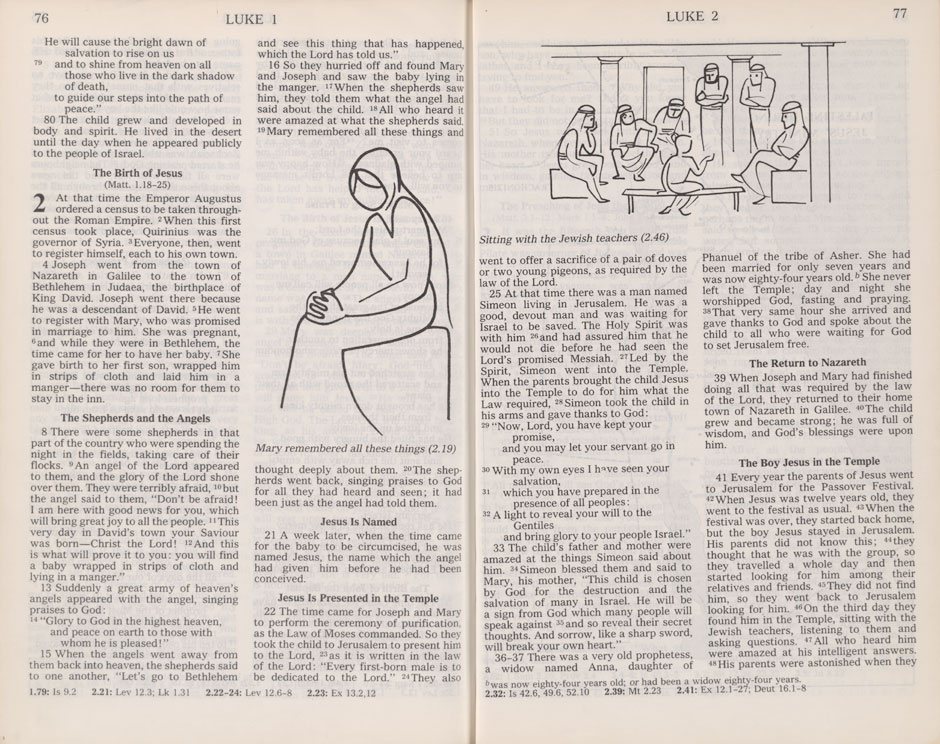There’s a phrase in a New Testament verse that is easy to overlook, yet has sweeping implications. The verse is Galatians 4:4. Here it is (with verse 5 also) in the NASV:
“But when the fullness of the time came, God sent forth His Son, born of a woman, born under the Law, so that He might redeem those who were under the Law, that we might receive the adoption as sons.”
“The fullness of time” is such a “pregnant” phrase. It describes a ripening process. God is getting ready to do something. Something monumental. But a number of factors have to fall into place. Everything has to line up in just a certain way in order for the time to be fully ripe for this monumental event. In many different ways, the state of the world, of culture, and of mankind, had converged on a point in time so as to be fully optimized for the reception of God’s Son, the Messiah, and the effective and efficient distribution of His message.
Here are just a few of those:
- Messianic expectancy. The Jews were ever mindful of the promise of God to send a Messiah, who would (they assumed literally) free them from Roman rule – indeed of rule by any entity but God Himself.
- Spiritual receptiveness. Among the Jews, there was a hunger to hear from God again. It had been centuries since God had spoken through His prophets, and people were longing to hear from Him again. Among other people groups, there was a spiritual hunger as well.
- World peace. The world was experiencing a time of peace longer and deeper than it had for centuries. The “Pax Romana” was an era of relative peace among nations, which made travel, commerce, and communication much less difficult. Rome had conquered the known world, and peace reigned.
- One language. While Rome had conquered the world militarily, Greece had conquered it culturally. And one of the results of that was that everyone spoke Koine (or Hellenistic) Greek, even if only as a second language. There was no language barrier in the known world.
- Improved transportation. The Romans, not having other nations to conquer, had turned their manpower to the task of improving the roads throughout the empire. And the streamlined transportation had increased commerce and travel. It would be easy for apostles like Paul to take the message throughout the known world.
But this post isn’t really about that verse.
God seems to repeat that “fullness of time” principle
at various times throughout human history.
One of those times was the youth revival that has come to be known as The Jesus Movement of the early 1970s.
The generation that had grown up in the shadow of World War I, had lived through the Great Depression, had fought in World War II or contributed in some way to the war effort, and had fought to achieve the American Dream, and thereby give their children a “better world” had given way to a generation of disillusioned young people who were uniformly and determinedly rejecting their parents’ values.
- They were rejecting the materialistic ambition of their parents to accumulate wealth and things
- They were rejecting the sexual morality of their parents as advanced contraception like “The Pill” came on the scene and made it possible to experience recreational sex with fewer consequences
- They were rejecting the educational understructure which served and enabled what they deemed materialistic and repressive institutions of business and commerce, and communicating this rejection through demonstrations, college riots, and radical (even violent) attempts to overthrow and redirect the university system
- They were rejecting what they saw as the tedium and staleness of their parents’ religious institutions. A growing spiritual hunger, fueled and championed in part by their musical and cultural heroes, yearned for a new and fresh expression unique to their generation
- They were questioning everything they had known to be true and searching in every corner for meaning and purpose in life
Their parents had worked doggedly all their lives to give their children “all the things we never had,” only to find that when they passed them along, with the values that drove them, they were not what their children wanted at all. Their children were turning instead to “sex, drugs, and rock ‘n roll” and Eastern mysticism for their answers. Some became hippies and some decided the answer was in getting “back to the land” and living communally.
In the midst of this morass of youthful rebellion and its myriad manifestations, little beacons of light began to emerge. Churches like Calvary Chapel, The Vineyard, and The Church on the Way on the west coast, and Belmont Church in the mid-south, began to welcome and embrace this generation of youthful seekers and to love them unconditionally. That love was impactful and transformative. Pastors like Chuck Smith, John Wimber, Jack Hayford, and Don Finto encouraged and challenged their members to love as Jesus loves and to overlook the counter-cultural trappings that were obstacles for so many. Many young people began to respond and to seek the source of that love, Jesus Christ.
Churches began to have “contemporary worship” services, and guitars found their way into the music of the church for the first time.
But one additional piece was still necessary for “the fullness of time” this time. And this is where it gets really interesting. Because this other piece wasn’t designed for the youth culture at all. It was designed for missionaries in Africa.
Up until the mid-1960s, the King James Version of the Bible, completed and published in 1611, was the version almost exclusively used in American protestant churches. Its majestic and lofty phrasing filled American churches, cathedrals, and homes for 350 years. As beautiful as the language is to listen to, it is often difficult to understand the meaning of what is written. In 1611 that was the vernacular – it was the language everybody used. But by the 20th century, it was archaic, many of the words were obsolete, and more than 350 words had changed meaning entirely. The word, “conversation,” for example, which meant “behavior” in the 15th century, means “talking with someone” now. And “prevent” meant “go before or precede” in 1611 instead of “hinder or stop from doing something,” as we now use it to mean.
Missionaries were fighting the difficulty of scriptures in an archaic language all the time. It added a frustrating level of complexity and the need for additional work just to get their point across. Bible and missionary societies across America were hearing this same complaint.
Eugene Nide, Executive Secretary of the American Bible Society’s Translations Department, had an idea for a new approach to translating the Bible called “Dynamic Equivalence.” Basically, it meant that instead of translating the Bible word-for-word, it should be translated thought-for-thought. This would also eliminate the additional hurdle of trying to translate idioms and colloquial expressions from one culture to another.
Using Nide’s new idea, Robert Bratcher, a staff member of the American Bible Society, translated the book of Mark in the New Testament into modern English. So enthusiastic was the reception of this “sample” translation, that the ABS commissioned Bratcher to do the entire New Testament. In 1966, his project was released to publication in paperback under the title, Good News for Modern Man: The New Testament in Today’s English Version. America finally had a Bible in contemporary American English. Over the next 3 years it would sell 17.5 million copies. By 1971, that number would be 30 million!
But now, back to “the fullness of time…”
When America’s youth revival hit in the early 70s, and young people by the millions, all over the country, began finding an answer to their spiritual hunger in the love of Jesus Christ, and a personal relationship with Him, and the love and acceptance of his people, the American Bible Society was ready with inexpensive, easy-to-understand New Testaments.
Now, in addition to getting to know God and be loved by His people, they had their very own handbook to this new found spirituality – God’s very own testimony of His love for mankind – in language they could understand. That was the other necessary piece. And now the Jesus Movement was in full swing and spreading like wildfire.


The cover was designed to communicate that reading this New Testament is just as easy as reading the newspaper, and that the Bible’s principles are just as current as today’s news. The layout, sub-chapter headings, and the simple line drawing illustrations echoed the same ideas.


The importance of the timely publication and distribution of this little book cannot be overstated. It was passed out by the case to young people, from middle-schoolers to 20-somethings. It was carried by students all over high schools and colleges, and used in youth Bible studies and prayer groups. It was the ideal vehicle, at that moment in time, to plant the seed of God’s word into the hearts of a generation. And teens and older (and some younger) who might never have otherwise read (and who certainly would not have understood) the Bible were reading it as the personal love letter from God that it was intended to be.
I felt compelled to write this post if for no other reason than to say this:
I think the role of that little book in the youth revival (The Jesus Movement) of the 70s has largely been overlooked and has never been fully appreciated. It was HUGE. It opened millions of eyes to God’s Word at a time when the Holy Spirit was moving in a significant way to touch the hearts of a generation.
Bratcher went on to translate the Old Testament as well, and The Good News Bible was published in 1976, paving the way for other groups and individuals to translate the scriptures into modern English in different ways and using different approaches – often with a specific audience in mind.
I am not unaware (that means I AM aware) that the Good News Version (Today’s English Version) has fallen into disrepute these days, and is the subject of derision, ridicule, rejection, disrespect, and contempt by many Christian sects and denominations. And Robert Bratcher has been called everything from heretic to apostate. The Good News Bible is far from perfect – both in its translation and its theology. But it is the tool God chose to use at that time – in the fullness of time – and that cannot be denied.
And as a result, we now have another 30 or more modern language translations and paraphrases. Additionally, Bratcher’s work paved the way for groups like Wycliffe Bible Translators and others that translate the Bible into the languages of tribes and people groups all over the world.
As a product of the Jesus Movement myself, I am grateful for Robert Bratcher and for Good News for Modern Man. It was the “baby food” I needed until I could handle something more solid and more accurate. It was my launching pad. It will always have a special place in my heart. It came at just the right time. “In the fullness of time…”




Thanks for sharing this bit of Christian history. I didn’t know that the Good News was the first dynamic equivalent translation in English. It was the first bible that I received after the KJV New Testament my grandfather gave me (he was a long-time member of the Gideons). I enjoyed being able to read and understand the Good News Bible for myself and I loved the simple illustrations (in my mind I can still see the picture for Galatians 6:2).
Thanks, Jennifer, for taking the time to read my little article. Blessings!